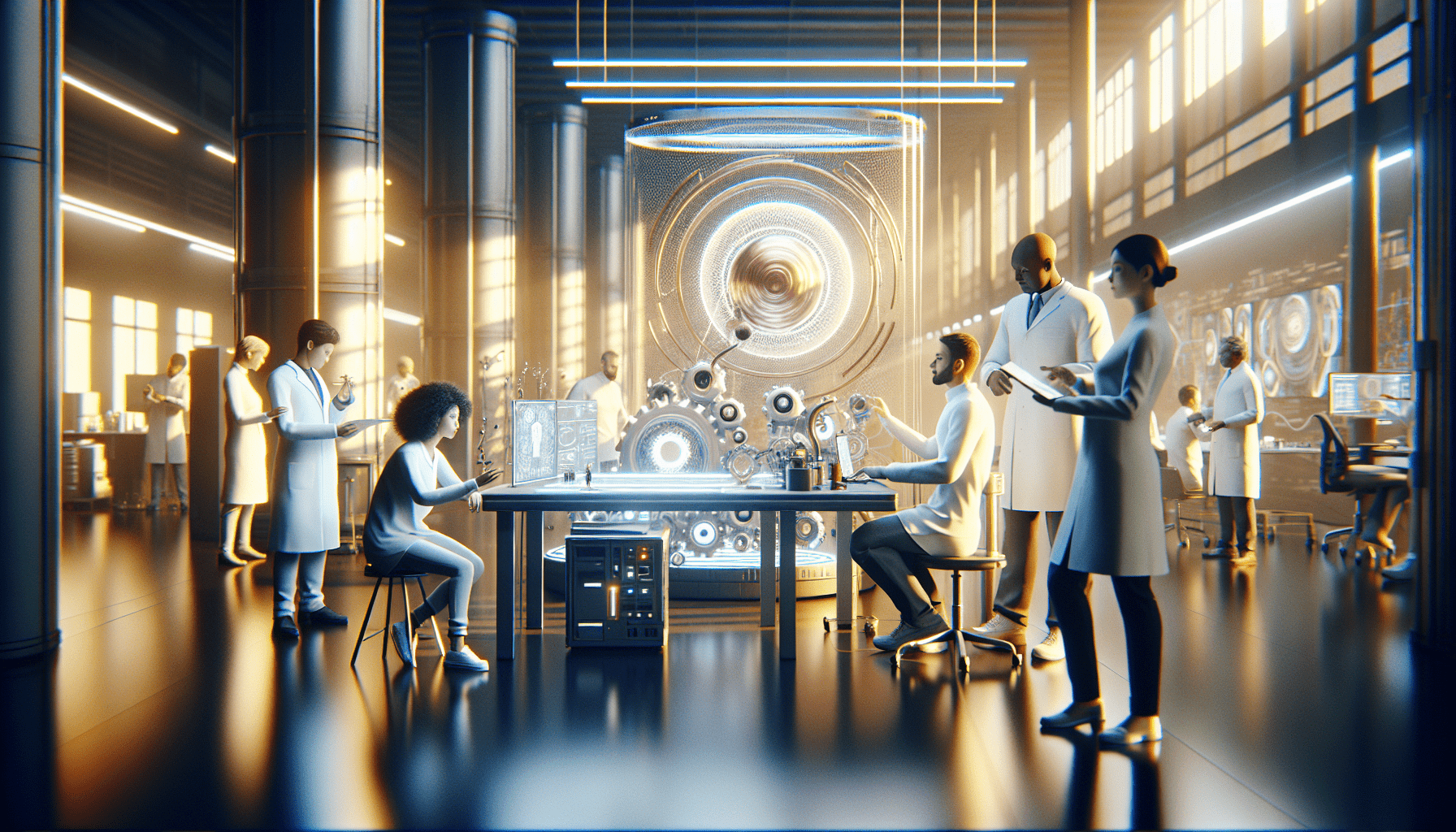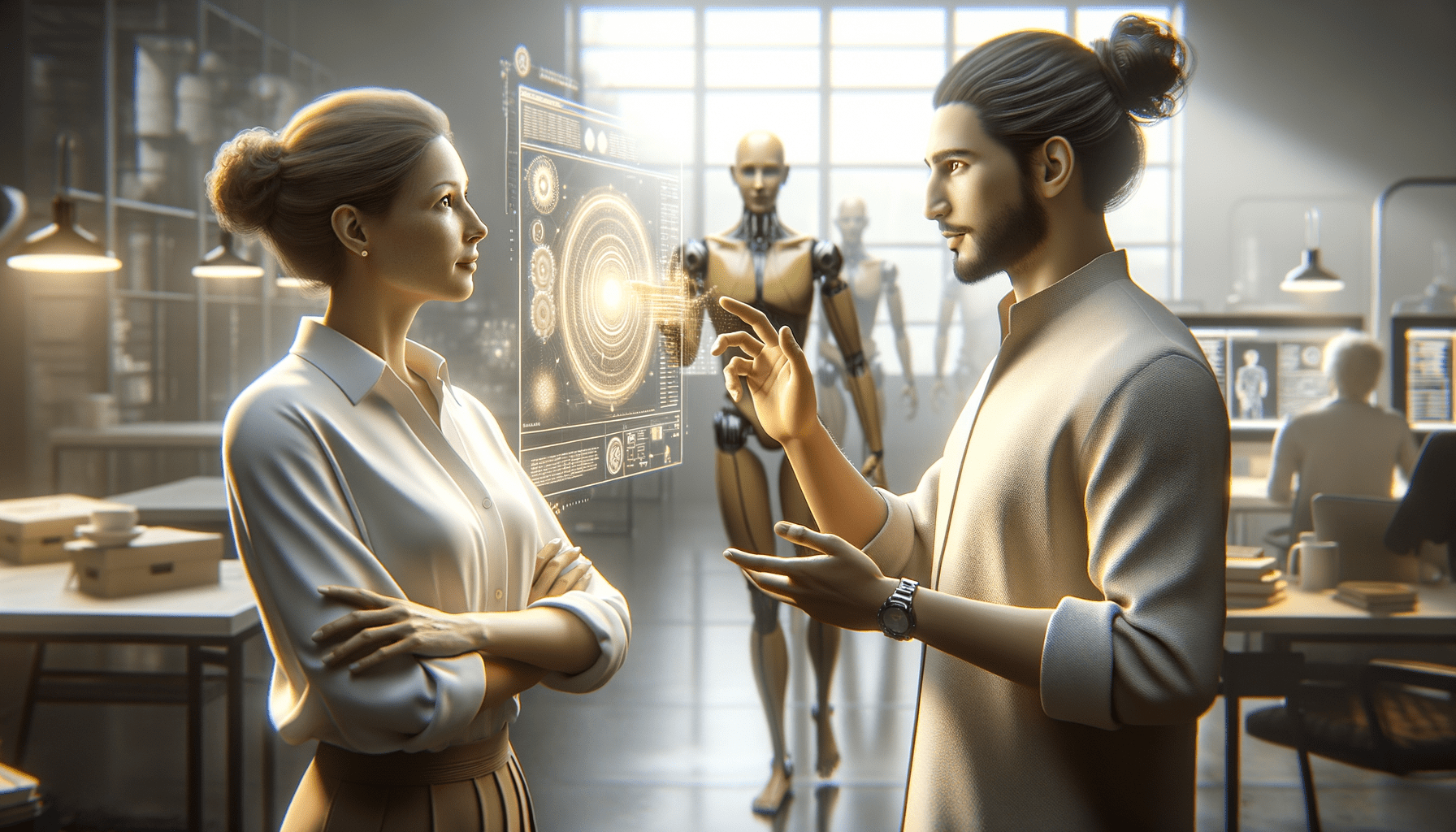In the rapidly evolving landscape of AI content generation, the collaboration between humans and AI is unlocking new realms of creativity and efficiency.
This article explores how to enhance the creative synergy between humans and AI, providing insights and practical steps for individuals in tech roles to leverage this powerful partnership.
Understanding Creative Synergy Between Humans and AI

Key Points
- AI augments human creativity by handling repetitive tasks and providing data-driven insights.
- Human intuition and emotional intelligence are crucial for guiding AI-generated content.
- Effective collaboration requires clear communication and understanding of AI capabilities.
- Continuous learning and adaptation are essential for maximizing the benefits of AI-human synergy.
- Ethical considerations must be addressed to ensure the responsible use of AI in creative processes.
Historical Context
The concept of creative synergy between humans and machines is not new. It dates back to the Industrial Revolution, when machines began to assist humans in manufacturing processes. However, the advent of AI has taken this collaboration to a new level. AI systems like GPT-4 can now generate text, art, and music, pushing the boundaries of what is possible in creative fields.
Historically, humans have always sought tools to enhance their creative output. From the invention of the printing press to the development of digital art software, each technological advancement has brought new opportunities and challenges. Today, AI represents the latest tool in this ongoing journey, offering unprecedented capabilities for content generation and creative collaboration.
Current Applications
In the present day, AI is being used in various creative industries, from digital art and music production to content writing and marketing. Companies like OpenAI and MidJourney are at the forefront of this revolution, providing AI tools that assist human creators in generating high-quality content. These tools analyze vast datasets, identify patterns, and produce outputs that can inspire and complement human creativity.
For instance, AI-generated art has become a popular medium for artists looking to explore new styles and techniques. Similarly, AI-driven content generation tools are helping writers and marketers produce engaging and relevant content more efficiently. By automating repetitive tasks and providing data-driven insights, AI allows human creators to focus on higher-level creative thinking and problem-solving.
The Challenge: Keeping Up with Content Demands
Increasing Content Volume
One of the biggest challenges in the AI content generation industry is the ever-increasing demand for high-quality content. Startups and medium-sized companies often struggle to keep up with this demand due to limited human resources and the fast-paced nature of the industry. This pressure can lead to burnout and decreased productivity among content creators.
Moreover, the need for innovative and engaging content is higher than ever. Audiences are constantly seeking fresh and unique experiences, making it essential for companies to continuously produce new and exciting content. This challenge is further compounded by the rapid advancements in technology, which require content creators to stay updated with the latest trends and tools.
Balancing Quality and Quantity
Another significant challenge is balancing the quality and quantity of content. While AI can help generate large volumes of content quickly, ensuring that this content meets high-quality standards is crucial. Human oversight is necessary to review and refine AI-generated content, ensuring it aligns with the brand’s voice and resonates with the target audience.
Maintaining this balance requires a collaborative approach where humans and AI work together seamlessly. Human creators must understand the capabilities and limitations of AI tools, using them to enhance their work rather than relying on them entirely. This collaboration can lead to more efficient content production processes and higher-quality outputs.
Adapting to Technological Changes
The rapid pace of technological change presents another challenge for the AI content generation industry. New AI tools and techniques are constantly being developed, requiring content creators to continuously learn and adapt. This can be overwhelming, especially for smaller teams with limited resources.
To stay competitive, companies must invest in ongoing training and development for their employees. This includes providing access to the latest AI tools and resources, as well as fostering a culture of continuous learning and innovation. By staying ahead of technological trends, companies can better leverage AI to enhance their creative processes and meet the growing demand for high-quality content.
Steps to Enhance Creative Synergy
Step 1: Integrate AI Tools into Creative Workflows
To enhance creative synergy, start by integrating AI tools into your existing workflows. Identify repetitive tasks that can be automated, such as data analysis, content generation, or image processing. Use AI to handle these tasks, freeing up human creators to focus on more strategic and creative aspects of their work.
For example, AI-driven content generation tools can help writers produce initial drafts, which can then be refined and polished by human editors. Similarly, AI-powered design tools can assist graphic designers in creating visually appealing layouts and graphics. By leveraging AI in this way, you can increase efficiency and productivity while maintaining high-quality standards.
Step 2: Foster Collaboration and Communication
Effective collaboration between humans and AI requires clear communication and understanding of each other’s capabilities. Encourage your team to experiment with AI tools and provide feedback on their experiences. This will help you identify areas where AI can be most beneficial and address any challenges or concerns that arise.
Additionally, foster a culture of collaboration where human creators and AI tools work together seamlessly. This can be achieved through regular training sessions, workshops, and brainstorming sessions. By promoting open communication and collaboration, you can create an environment where AI and human creativity thrive together.
Step 3: Continuously Learn and Adapt
The AI content generation industry is constantly evolving, making it essential to stay updated with the latest trends and advancements. Invest in ongoing training and development for your team, providing access to the latest AI tools and resources. Encourage continuous learning and experimentation to keep your team at the forefront of the industry.
Additionally, regularly review and assess your AI tools and workflows to ensure they are meeting your needs and delivering the desired results. Be open to making adjustments and improvements as needed. By continuously learning and adapting, you can maximize the benefits of AI-human collaboration and stay competitive in the fast-paced world of AI content generation.
FAQs
What is the creative synergy between humans and AI?
Creative synergy between humans and AI refers to the collaborative process where human creativity and intuition are combined with AI’s data-driven insights and automation capabilities. This partnership enhances the creative output, making it more efficient and innovative.
How can AI enhance human creativity?
AI can enhance human creativity by handling repetitive tasks, providing data-driven insights, and generating initial drafts or ideas. This allows human creators to focus on higher-level creative thinking, problem-solving, and refining the final output.
What are the challenges of integrating AI into creative workflows?
Challenges include balancing the quality and quantity of content, staying updated with rapid technological changes, and ensuring effective collaboration between humans and AI. Addressing these challenges requires ongoing training, clear communication, and a culture of continuous learning and adaptation.
How can companies stay competitive in the AI content-generation industry?
Companies can stay competitive by investing in the latest AI tools and resources, fostering a culture of continuous learning and innovation, and regularly reviewing and improving their AI workflows. Staying ahead of technological trends and promoting effective collaboration between humans and AI is key to maintaining a competitive edge.
Future Predictions
The future of creative synergy between humans and AI holds exciting possibilities. Here are five robust predictions based on current trends:
- Increased Personalization: AI will enable more personalized and targeted content, enhancing user engagement and satisfaction.
- Enhanced Collaboration Tools: New AI-powered collaboration tools will emerge, making it easier for teams to work together seamlessly.
- Real-Time Content Generation: AI will enable real-time content generation, allowing for more dynamic and responsive creative processes.
- Improved AI Understanding: Advances in AI will lead to better understanding and interpretation of human emotions and creativity, resulting in more authentic and meaningful content.
- Ethical AI Practices: There will be a greater focus on ethical AI practices, ensuring responsible and transparent use of AI in creative processes.
More Information
- Artificially Inspired: Unleashing the Creative Synergy of AI and Human Collaboration – An insightful article on the collaboration between AI and human creativity.
- Exploring the Human-AI Synergy Flux | The Generator – A detailed exploration of the evolving relationship between humans and AI.
- Creative Synergy – Filmmaster – An article on the integration of AI in creative processes by Filmmaster.
- How Humans and AI Are Working Together in 1,500 Companies – A Harvard Business Review article on the collaboration between humans and AI in various industries.
Disclaimer
This is an AI-generated article with educative purposes and doesn’t intend to give advice or recommend its implementation. The goal is to inspire readers to research and delve deeper into the topics covered in the article.
- The Agentic Startup Manifesto - June 8, 2025
- Remote Hiring in 2025 - April 5, 2025
- Burnout in Remote Teams: How It’s Draining Your Profits - January 27, 2025
